Vintage, Hip Porto: travel guide! Harry Potter bookstore, modern architecture, Bombarda street art.

“Blue skies, Smiling at me… Nothing but blue skies, Do I see.” – Ella Fitzgerald
As you’ll see from the photos in this post, the jazz song seems to have been written for Porto, Portugal! Let me share how I spent the perfect day in Porto — a travel itinerary that includes vintage shops, the Harry Potter library, futuristic architecture, and the best sponge cake in the world.
(PS – but I’m currently in Istanbul and Brussels… follow along on @lacarmina Instagram and Snapchat to see my daily life.)
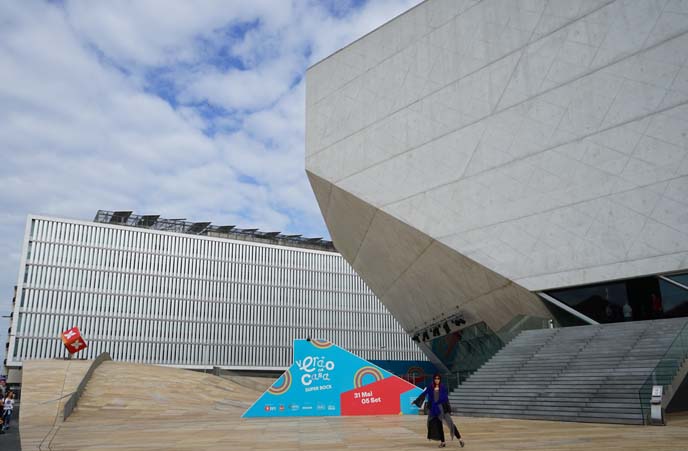
Porto is about a five hour train ride north of Lisbon. A stress-free journey, thanks to our Eurail passes that let us board trains all over Europe.
As you recall from this Lisbon story, we loved Portugal from the moment we arrived. I heard that Porto was a laid-back, artsy type of place — and so we came to check it out with the help of Visit Porto.
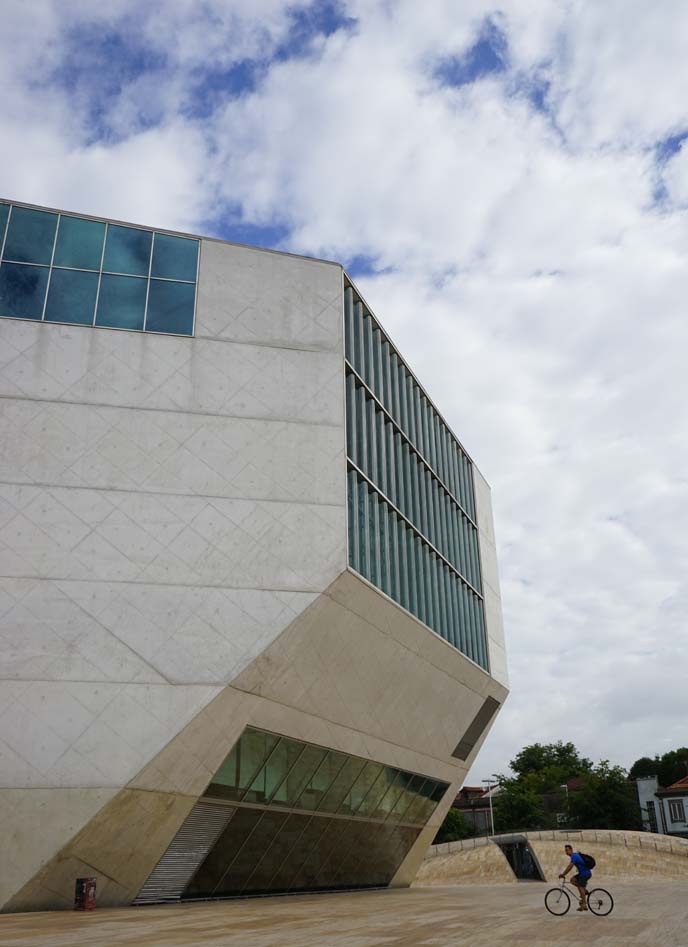
Porto is known as a center of modern architecture. We started our day at the Casa da Musica, designed by the legendary Dutch architect, Rem Koolhaas.
This spaceship-like auditorium has over a thousand seats and is bathed in light, thanks to two walls made entirely of glass.

We saw more alien art as we drove along the coast. This hovering net is “She Changes,” a work by Janet Echelman. Made from wire, the sculpture pays tribute to Porto’s seafaring and fishing industries.
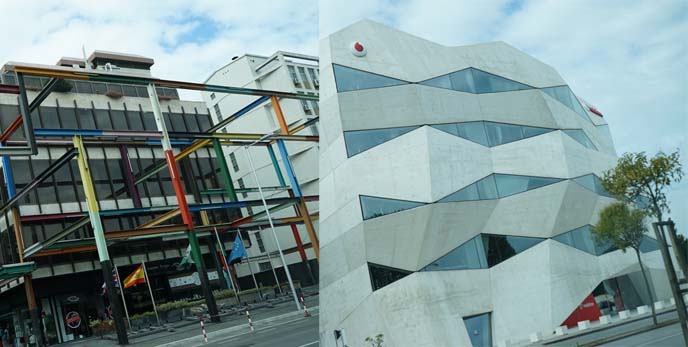
As we drove around the city, we spotted contemporary buildings at every turn. There’s a renown architecture school in Oporto, and two locals won the international Pritzker prize (the highest honor for an architect).
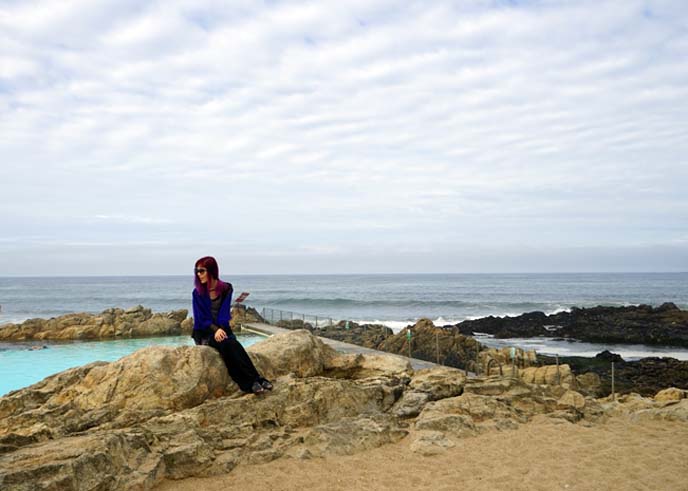
One of these architects, Álvaro Siza Vieira, constructed this mesmerizing Leça Swimming Pool in 1966. The open-air pool is filled with salt water from the Atlantic Ocean, and the design naturally harmonizes into the craggy coastline. I felt like a mermaid, perched on the rocks and gazing at never-ending skies and waves.
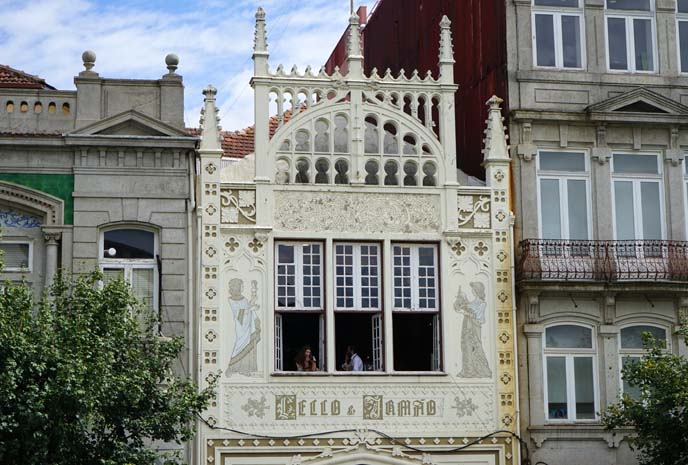
In addition to these modern works, you’ll find charming century-old buildings all over Porto. One of the oldest bookstores in Portugal is Livraria Lello, which dates back to the late 19th century.
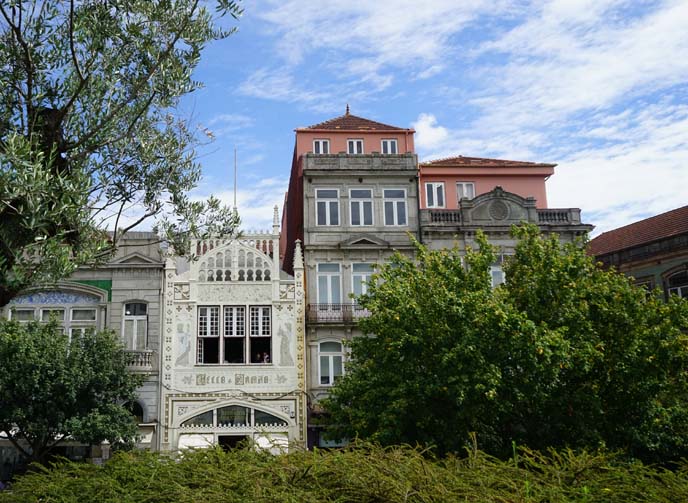
The shrubbery hides the long lineup inside… Livraria Lello is Porto’s most famous landmark because of how it inspired author JK Rowling to write Harry Potter!
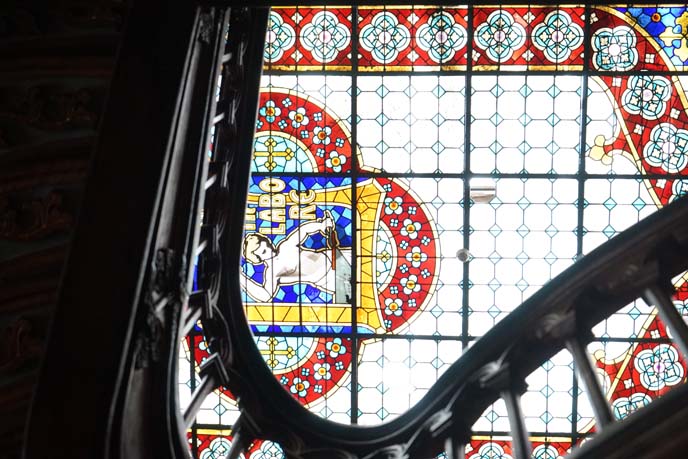
The best-selling author spent a great deal of time in Lello as she was formulating her story. The art nouveau meets Gothic interiors conjure up the magic of Hogwarts School of Witchcraft and Wizardry.
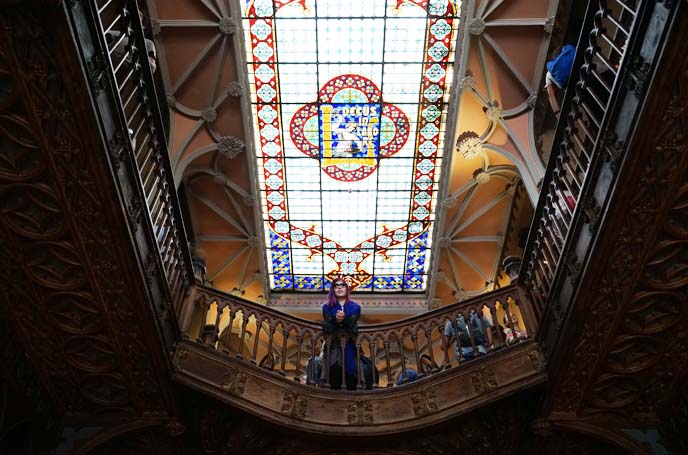
JK Rowling was most likely inspired to put a Grand Staircase in Hogwarts Castle, after seeing the winding wood stairs of this Porto bookstore.
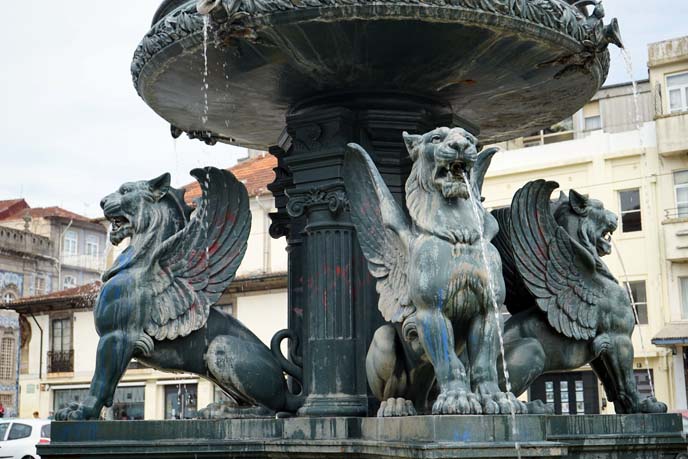
After, we spent a few hours walking around Porto. It’s the perfect balance for travelers like us: no annoying tourism trappings, and yet the city has a lot to see and experience.
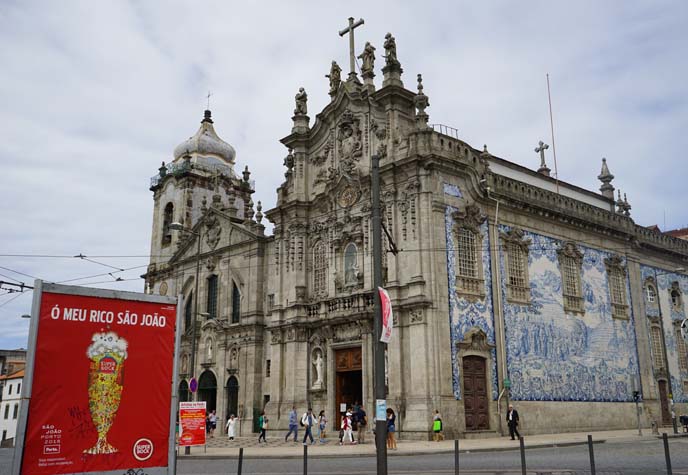
Our guide took us to the downtown square, and explained that this mega-church is actually two churches, separated by one of the world’s narrowest houses!
Carmo and Carmelitas was built this way to overcome a loophole, which prevents monks and nuns from having contact.

Located the left, Carmelitas has an ornate gold interior. On the right, the baroque Carmo has a striking blue and white panel on the side.

It seems blue and white are favorite colors here — I can see that inspiration comes from the sky.
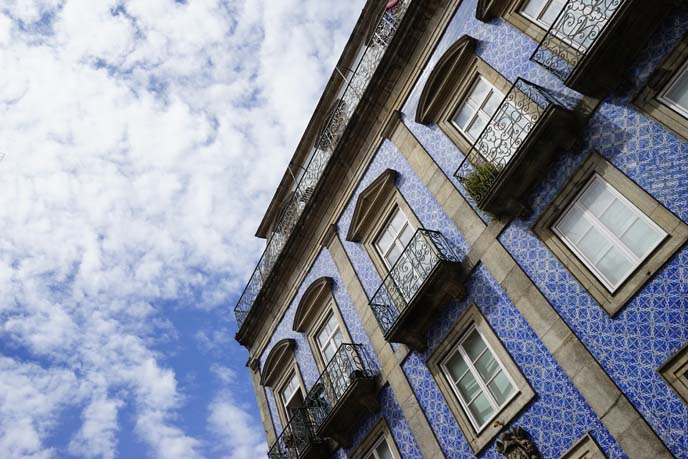
Those classic facades, with swirling wire balconies!
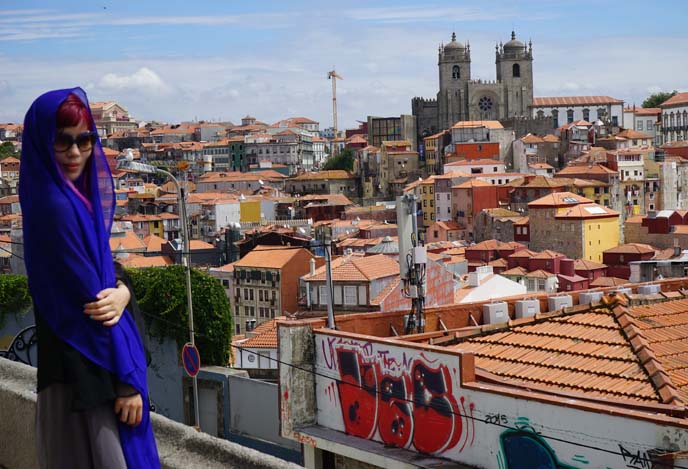
Our guide stopped at a viewpoint, overlooking red rooftops and the Romanesque Porto Cathedral (oldest in the city). I did a little panorama of this view on my Vine (you can add me @lacarmina).

Onward to my favorite Porto neighborhood: Bombarda, a district filled with young art and hip galleries.
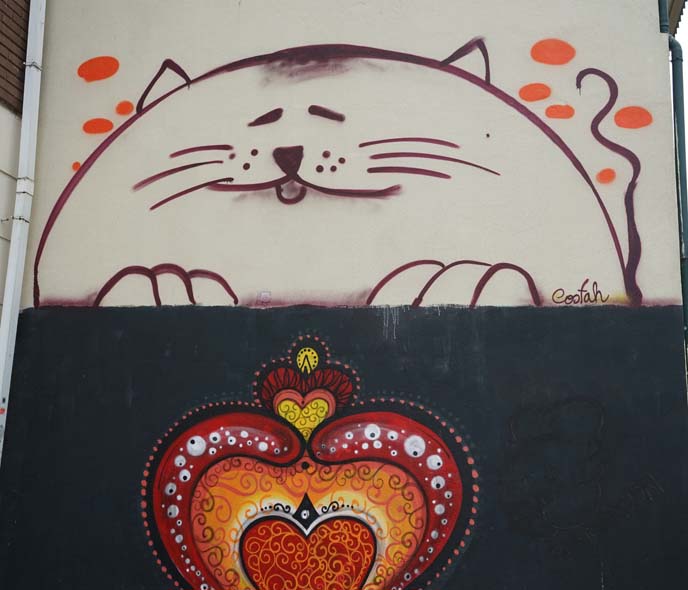
Bombarda is the bomb. Every few paces, we saw giant works of street art. The round cat over-top a heart was my favorite.
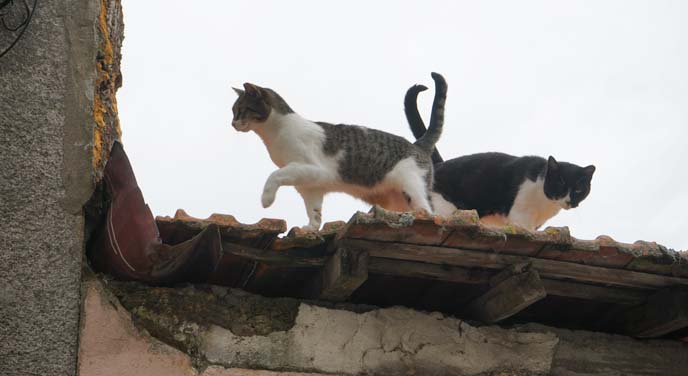
Perhaps these two kitties, intertwining their tails on a nearby wall, were the muses.
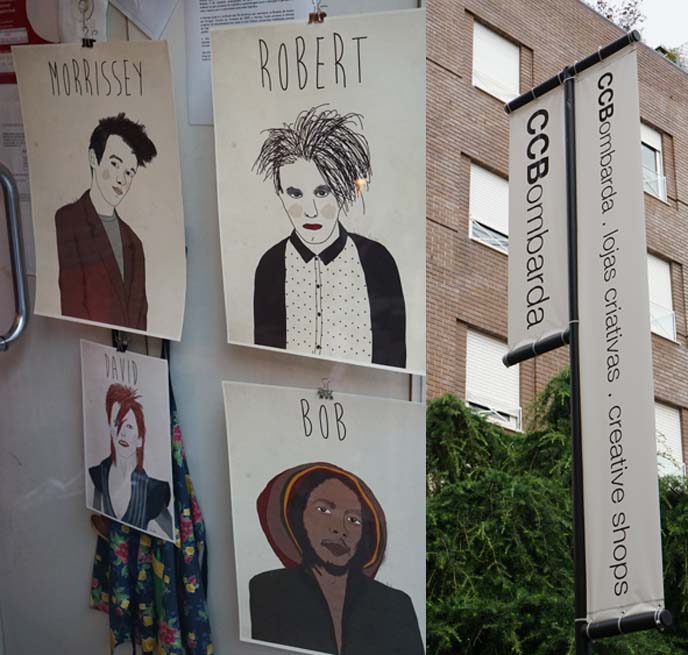
We browsed small, indie “creative shops” inside the Bombarda CCB Centro Comercial.
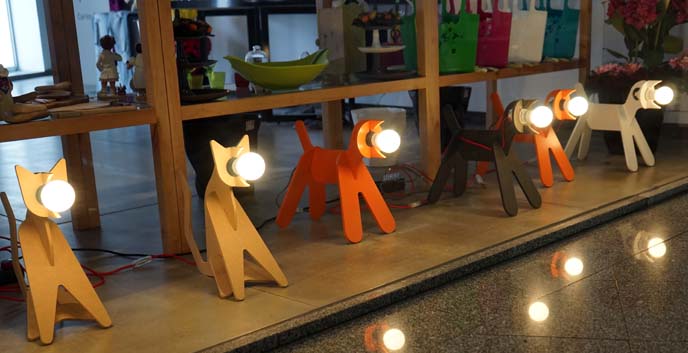
Locals have all sorts of designs on display here, from Robert Smith illustrations to dog and cat lamps. We also stopped by the CCB cafeteria for a simple yet incredibly tasty homestyle meal.

I recommend walking on Rua Miguel Bombarda, and popping into the various galleries. So much intriguing art to see here! Keep reading…
SHARE & COMMENT
Watch me on Travel Channel’s new TV show: Could I Live There? Karisma El Dorado restaurants, cooking classes.
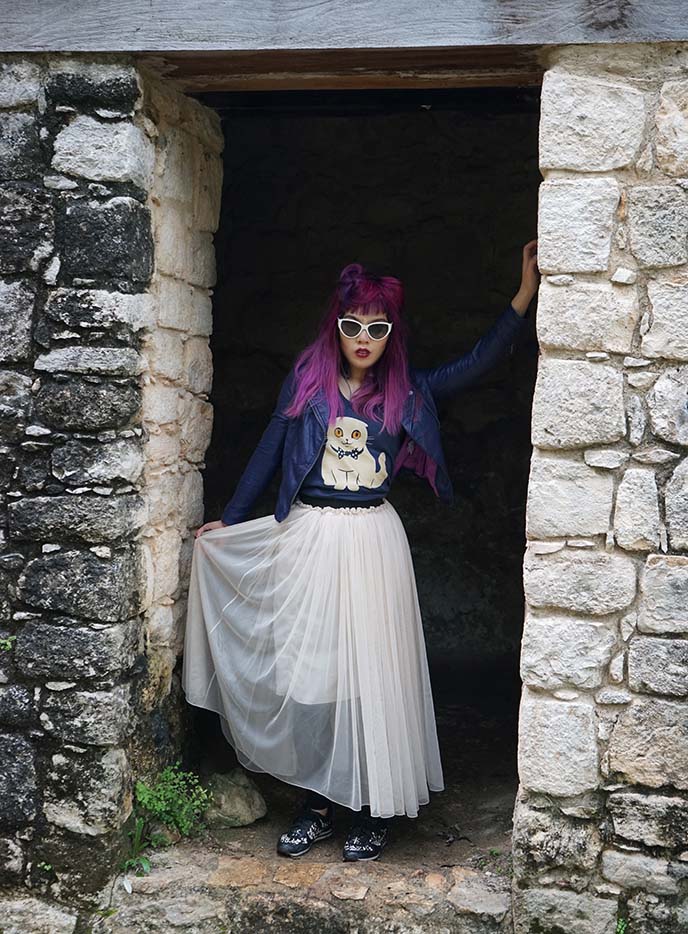
Welcome to a new edition of my Mexican travelogue. Yukiro and I ate like queens at Karisma Hotels & Resorts… I hope you’re hungry, as there are a lot of food photos ahead!
(I’m sure you are curious about my Basil Farrow cat top (above). It’s by LA-based designer Lili Chin, who custom-makes shirts and drawings to look like your pets! There’s info on her site, and I’ll be posting more images soon.)
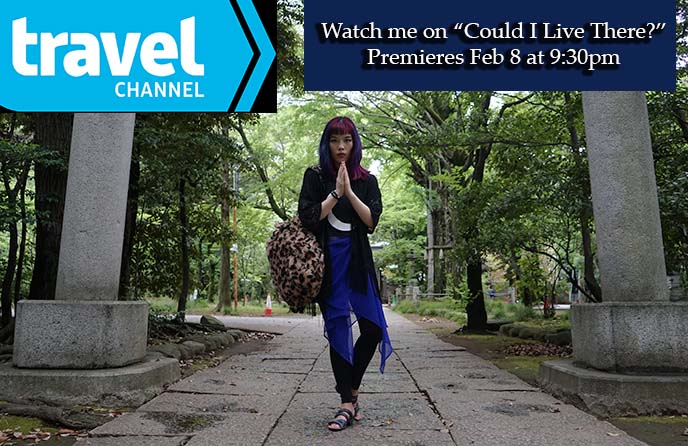
But first, some quick updates about my upcoming TV appearances and travel destinations.
Perhaps you’ll recall that I was in Tokyo last spring, to shoot a show with Travel Channel. Now, I can officially reveal details about the series, called “Could I Live There?“
In each episode, a couple considers moving to a new country — and makes the decision after exploring it with a “relocator”. I’m the on-camera host for the Japan show, titled “Tokyo’s Cute Culture.” Above is a scene from a Shinto temple, where I took the pair before they decided whether to stay in the US or move to Tokyo.
I had a terrific shoot with the production team, and hope you’ll tune into Travel Channel to watch me on TV! “Could I Live There? – Japan” premieres Monday, February 8 at 9:30 pm (8:30 pm Central), and repeats the next day at 12:30 am (11:30 am Central).

If you’ve been following my Instagram and Snapchat (@lacarmina), you’ll have seen me in Los Angeles.
Now, I’m boarding a flight on Turkish Airlines… and heading to Istanbul for the first time! I’ve dreamt of visiting “Constantinople” for years, and finally got the chance to go — thanks to a generous invitation from the World Tourism Forum. I’m honored to be one of about 20 international bloggers chosen to participate in the event. Can’t wait to share images of the Blue Mosque, Hagia Sophia and more.
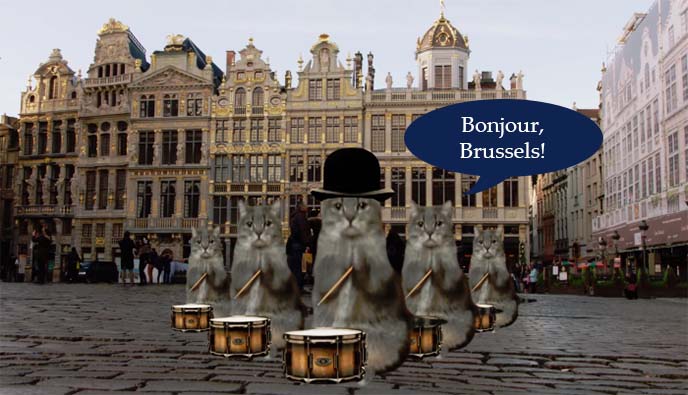
Right after, I’m excited to be doing a project with Brussels Tourism! My filmmakers Borderless Media and I will be shooting travel stories in Belgium, including coverage of the decadent Binche carnival. I’m looking forward to a taste of chocolates, surrealism, street art and underground culture.
(Above is a still from their Rene Magritte inspired video featuring cats taking over the city.)

And now, back to our Riviera Maya escapades at Karisma El Dorado. As I mentioned in the first article, Yukiro and I had full access to their three resorts.
We found this Ganesha elephant god statue in a little garden, hidden between the Casitas and Generations properties.

My t-shirt of the Hindu god, Shiva, turned out to be the perfect match for this mural! It’s by 1991NewYork, a newly launched clothing line by designer and tattoo artist Hiten Damodar. The striking style pays respects to his Indian background, but with an Americana feel.

Hiten says: “We chose the name 1991NY because that is the year my family and I moved to this country. The style is influenced heavily by my tattoo background as well as imagery from mythology, religion, and symbolism.”

In addition to Shiva the Destroyer, 1991NewYork has eye catching t-shirts featuring Ganesh, Kali and more. Everything is made in the USA and sure to turn heads. Pick out your favorite shirt here and check out @1991newyork on Instagram.

Now that our fashion vogue-ing is complete, Yukiro and I are ready to eat!
Each of the Karisma resorts has a different focus (Casitas is for couples, Generations Riviera Maya is for all-ages and families). We enjoyed aspects from each of them.

There’s a suite and experience for every type of traveller. At the newest property, Generations, guests could walk right out into their own balcony swimming pool.

Between El Dorado Royale, Casitas and Generations… we had over a dozen all-inclusive restaurants to choose from!
The cuisine offerings included: Caribbean, Italian, Mexican, Japanese, American. Yukiro looks like he’s strangling himself out of amazement.

I knew that Karisma had a reputation for excellent food. However, I confess I didn’t expect their restaurants to be quite this good.
Wine Kitchen (at Generations Riviera Maya) set the mood with chandeliers and candles. We loved the amuse bouche with watermelon and spices, and the special wine pairings that came with each plate.

When everything comes at no extra cost, you can live out your foodie dreams. We ordered a large range of plates to try… and dessert, always.

If only we had time to try each Karisma dining room! Jade Restaurant has an Asian menu, and the decor to match.
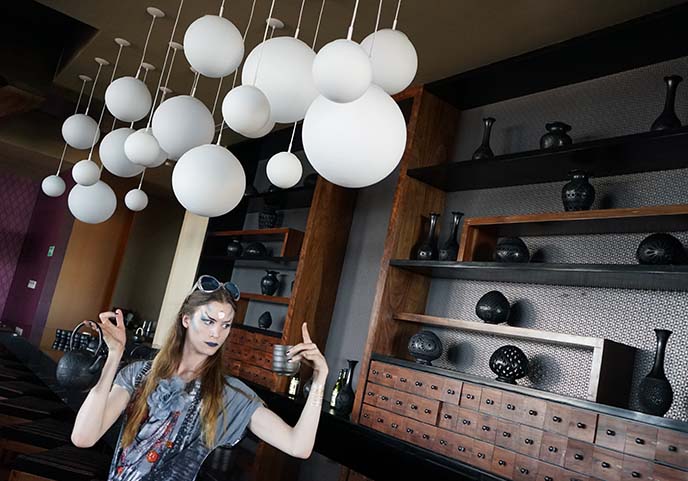
Karisma encourages guests to participate in the food experiences. At the Jade “tea bar,” you could create your own unique blend of tea.

The resorts had several entertaining “dinner theaters” where you could watch guest chefs prepare meals — and take part in the cooking too. Several volunteers came up to help create Mexican dishes, which we then ate with pairings from Jackson Family Wines.

Fuentes Culinary Theater is one of the most popular attractions. The venue is set up like a Food Network TV show, and the chef riffs and jokes around with the audience — which teaching them how to make authentic Yucatan dishes.

On the two big screens, we could see close-ups of the ingredients. The chef walked us through each step of the preparation. As soon as he finished making the dish, a team of servers came out and served it to each table.

That evening, his menu was based on traditional Yucatan Peninsula flavors. To start, we had a fantastic soup made from avocado, octopus, radish, apple, and X’catic pepper.

I particularly enjoyed the segment where the chef introduced us to masa (corn dough), and showed us how to build it into tortillas, tamales, pupusas and more.

After three small bites inspired by street food, we devoured the mahi mahi (with pumpkin seed puree, corn, beans and crispy achiote tortilla). Above is the pork loin marinated in charred chilies, sweet potato and tamal. We had never tried these types of flavors and combinations before — what a meal to remember.
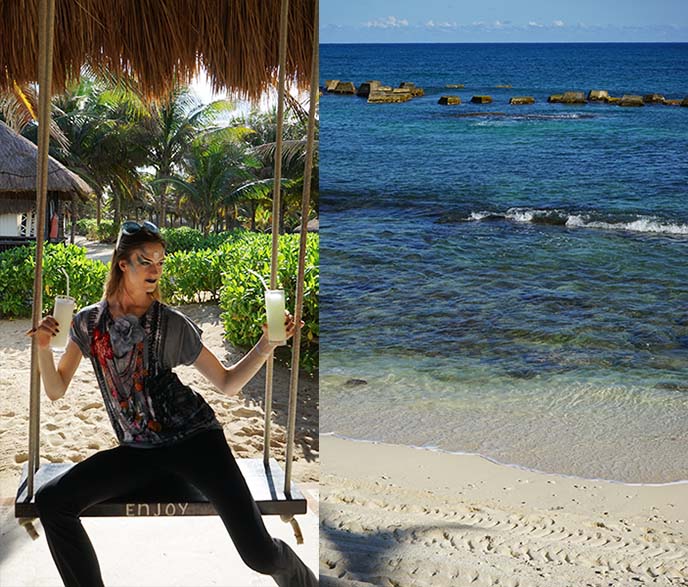
Karisma also had dozens of all-inclusive bars. We took the advice of this swing — “Enjoy” — and cooled down with salt-rimmed margaritas.
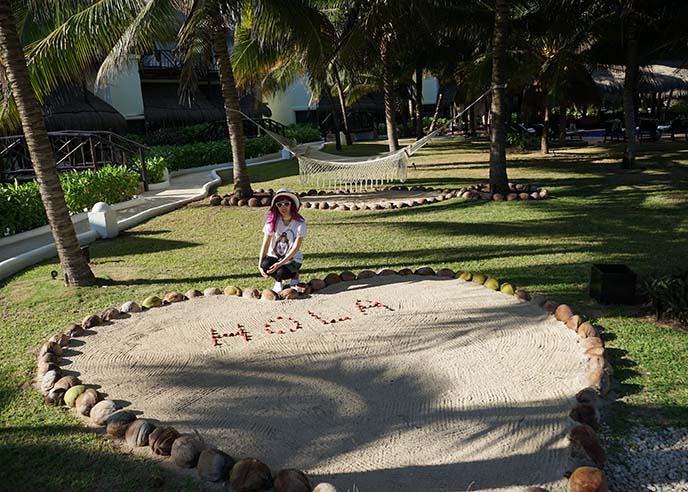
Since we were in Quintana Roo, Yukiro and I mainly ate Mexican food. We particularly are fans of avocado, mahi mahi and ceviche (raw marinated fish),

All of the above were on the menu at “La Carreta” in El Dorado Royale. Once again, if all the food is included, why not order one of everything…

… and a double serving of the outstanding ceviche?

We ate our fill of fresh berries, including in this strawberry dessert with avocado cream.

For lunch, we usually hit the Health Bar. In North America, I always cringe at the price of a fresh green juice (usually around $7-10). But at Karisma, everything is included… I think we must have ordered 25 smoothies and juices between the two of us!

The Health Bar had a long list of drink concoctions, and we also could create our own. We paired them with fresh salads and sandwiches made with whole grains.

Thanks to Karisma El Dorado, we were able to relax and enjoy the Riviera Maya.

No need to stress over anything… it’s all taken care of here.

I hope you are enjoying these Mexican posts. Don’t forget to watch me on Travel Channel (Feb 8), and check out my Snapchat and Instagram @lacarmina for the latest updates from LA, Istanbul and Brussels.
 LA CARMINA
LA CARMINA






